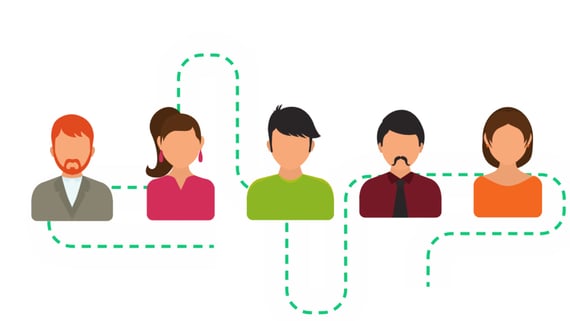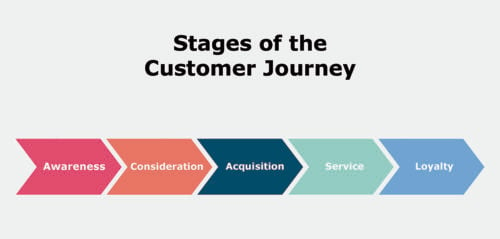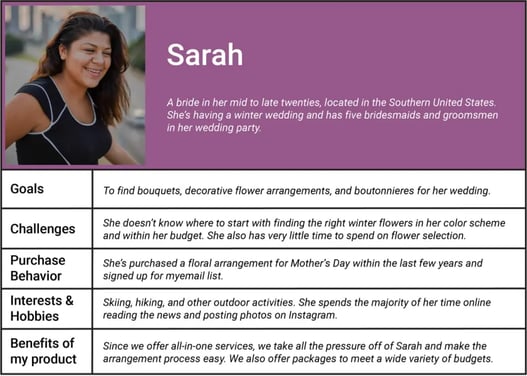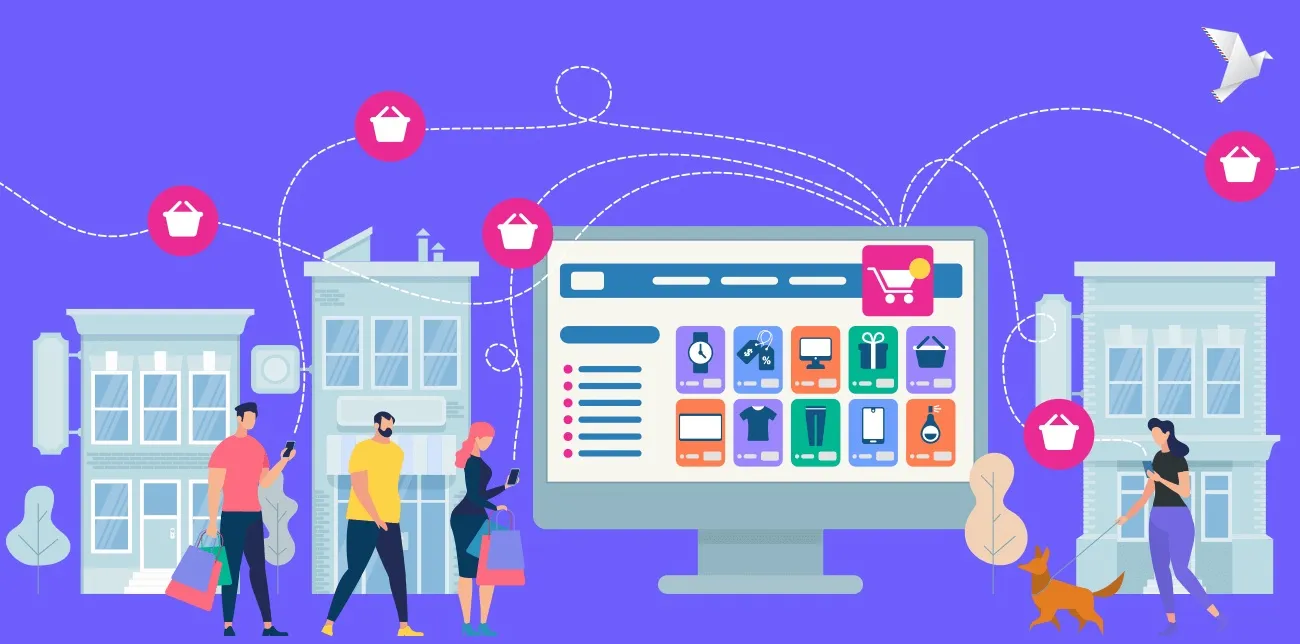Create Perfect Buyer Personas for Your eCommerce Business (Guide)
Understanding your audience is the one thing that can make or break your brand!
Have you ever thought if you really know your audience? Who are they and what exactly do they want or need?
Sometimes marketers think they really know their audience but actually they don’t!
By knowing the right buyer persona for your business, you will be able to craft marketing messages that are more effective and efficient in driving conversions and sales.
Discover how to craft powerful buyer personas for your eCommerce business. Learn the key elements that make up an effective buyer persona, so you can create meaningful customer experiences and find the right customers for your products.
Read this article to know how to start crafting your perfect buyer personas today.
Table of Content:
- What is The eCommerce Buyer Persona?
- How To Create The Right Buyer Persona For Your eCommerce?
- Why Is Determining Your eCommerce Buyer Persona Important?
- eCommerce Buyer Persona Types
- eCommerce Buyer Persona Best Practices and Examples
- Automate Your Targeting Now
What is The eCommerce Buyer Persona?
Buyer personas are fictionalized depictions of your ideal clients derived from data and market analysis. They aid in directing product development to meet the needs of your target market and coordinating all activities across your organization (from marketing to sales to service). They also assist you in concentrating your attention on qualified prospects. Buyer personas are tools for improving target audience comprehension, optimizing marketing strategies, and personalizing e-commerce.
How To Create The Right Buyer Persona For Your eCommerce?
Are you prepared to get started and develop your very first eCommerce buyer persona?
Here are a few fundamental steps to remember. However, any marketing specialist should adjust the specifics to match their current marketing strategy and corporate objectives.
1- Good Research
This includes market research and customer research — when creating an appropriate eCommerce buyer persona.
Information about topics like popular culture, business trends, the state of the economy, consumer trends, and related topics are gathered as part of market research.
Data unique to the current and potential clients of your business is included in customer research.
Details on demographics, hobbies, motives, pain spots, personal goals, purchasing patterns, etc. are covered in this section. Details on psychographics as well!
2- Collecting Necessary Information
Google Analytics and Facebook Audience Insights are two easily accessible ways to gather market research data for your eCommerce buyer profile.
Use those alternatives to gather fundamental data on your target audience, such as essential demographics and possible common interests, pastimes, and values.
Additionally, it's a good idea to research social media content and industry consumer studies that can be of interest to your target market.
Direct, one-on-one contact is always the greatest way to conduct customer research.
Create surveys to get the required data, and provide incentives to encourage your consumers to take part.
Person-to-person interviews are another excellent technique to gain insight into a certain customer. You should review the sign-up forms on your website or eCommerce store for more information.
3- Your Customer’s Buying Journey
Knowing every step of your consumer’s journey aids you in knowing in which phase he is, hence, you can offer a personalized marketing experience. The three steps of the buyer's journey are followed by the majority.
The consumer typically learns about the product for the first time from a piece of content that addresses a key need they have. Then they consider that product and all the various ways it might be useful to them. They finally convert when they make a purchase.
Effective marketing requires an understanding of this procedure, especially in light of potential variances among various eCommerce buyer personas.
Producing content that successfully leads readers through each step of the purchasing process, including conversion, is crucial.
4- Knowing Your Consumers’ Triggers
The majority of buyers don't choose their purchases in a Hoover.
There is usually a trigger—an occasion, a revelation, or some other driving force—that pushes them to move forward.
You must identify the possible triggers for your audience because it is these triggers that bring your customers to you in the first place in search of a solution.
There are three different ways that triggers can appear:
- Internal Triggers: These might be thoughts, feelings, or ideas. They may also be neutral (worries and stressors) or neutral (dreams and aspirations).
- External Triggers: These will be circumstances that the consumer cannot control but that they must nonetheless deal with. Consider their current work obligations, upcoming activities, or a particular need in their life.
- Seasonal Triggers: Of course, these can also relate to recognised holidays and peak shopping times. However, they can also be used to describe common objectives that individuals frequently have at particular times of the year, such as getting in shape at the beginning of the year or purchasing swimwear for the summer.
5- Create The Right Message
To teach people how to talk about your products and services, use your persona. This includes the particular terminology you must use as well as a more general elevator pitch that frames your response according to your persona.
By doing this, you can make sure that everyone working for your company speaks the same language to leads and customers.
Finally, give your persona a name (such as Finance Manager Margie, IT Ian, or Landscaper Larry) so that everyone refers to it consistently across teams when used internally.
6- Build Your Buyer Persona
This is where you begin to give life to your brand-new eCommerce buyer persona.
Include all the data you've gathered in an organized manner regarding the many facets of your hypothetical customer's personality.
By asking yourself a couple more questions, go one step further and develop your persona.
What stage of the client journey are they currently in, for instance? Are they new clients, first-time purchases, or never-before-purchased customers? What quotes and target messages can you include in your profile to improve it?
Make as many personas as necessary to accurately represent the various consumer types who buy or would be interested in your items.
Why Is Determining Your eCommerce Buyer Persona Important?
Knowing someone really well makes it quite simple to predict their behavior. You are familiar with their particular preferences. Determining your buyer persona will help you in some points:
- A Better Targeted Marketing: A well-designed eCommerce buyer persona is a tool that may help you understand your hypothetical ideal customer on an equal level. It's a thorough digital portrayal of that person and what matters to them most.
- Better Understanding Of Your Audience: Buyer personas include all the specifics of the categories these fictitious individuals fall under. It details their location, occupation, gender, and age. An eCommerce buyer persona, however, also identifies any specific problems or goals that make that person the ideal customer for your goods.
- Tailored Experiences For Your Customers: A strong eCommerce buyer persona makes it easier to understand the thoughts of your target audience. This influences the production of quality content, establishes the most appropriate marketing channels, aids in the intelligent allocation of your marketing budget, and more.
- More Focused & Related Products & Services: Buyer personas may guide everything from product development to website design, helping businesses focus their marketing efforts on the most likely customers.
- Better problem-solving and lead generation: You may still effectively advertise on websites like Facebook and Instagram by using buyer personas, which provide you with the audience data you need to target the appropriate demographics online.
7 eCommerce Buyer Persona Types
To be able to create your perfect buyer personas, you need to know the buyer persona different types to see which falls under which one:
- The Innovator: driven by the desire to accept new technologies or products first. Those are the ones who will be willing to try out your new, innovative ideas, products, or services.
- The Value Hunter: always searching for the greatest rates and offers in order to purchase things that are worthwhile for their money. Promote a compelling value proposition that explains the advantages and value of your items to attract these consumers to your brand. Offer a limited-time coupon, a flash sale, or other special website promotions to encourage purchases.
- The Researcher: Researchers enjoy spending time learning about your items and any prospective advantages. You should explain how your products live up to your brand promise, respond to their inquiries, and describe how the products can improve the quality of the customers' lives if you want to attract these customers.
You might use evaluations, recommendations, and case studies (if appropriate) to influence their decision-making by fostering trust and offering significant social proof. The persuasive quality of social proof might persuade customers to emulate others who have given your company positive evaluations. - The Impulsive Buyer: They tend to make impulsive decisions, don't conduct much study, and are frequently motivated by emotion. You can influence their decisions with emotional ads and campaigns.
- The Bargain Hunter: They are extremely motivated by sales and discounts, and they will go above and beyond to locate the best price. Always offer them discounts, offers, and deals that contribute to the sense of urgency that encourages them to make a purchase.
- The Loyal One: a devoted advocate for your company. They are extremely knowledgeable about your goods, frequently to the point where they serve as brand advocates and repeat customers. Maintaining their interest in your business and thinking of ways to maintain gaining their trust, loyalty, and business can help you connect with this consumer persona. To keep customers coming back to your website, be sure to give them an engaging user experience and think about providing incentives like a loyalty program.
eCommerce Buyer Persona Best Practices & Examples
When designing buyer personas for e-commerce, keep the following those best practices:
- Conduct research: Compile information on the needs, interests, and behaviors of your target audience using surveys, interviews, and analytics tools.
- Extrapolate insights from data: After collecting data, use it to derive insights that will help your e-commerce store make decisions.
- Specify the segments: Create distinct buyer personas for your target market that reflect various demographics and behaviors. This will assist you in developing segment-specific marketing strategies.
- Make thorough profiles: Create thorough persona profiles for each of your characters that include their motives, problems, purchasing tendencies, and preferred routes of contact.
- Maintain your personalities by reviewing and updating them: over time, your target market will change. The performance of your paid campaigns and the results of A/B testing your website's content can both be used to know them better.
Here are some Buyer Persona examples for you:
- Sarah, who is 26 and works in digital marketing, is passionate about eco-friendly clothing. She favors shopping from firms that uphold moral and environmental values and provides premium goods at affordable pricing. When it comes to internet buying, she loves simplicity and convenience.
- John, a 35-year-old finance professional, enjoys using technology. He favors making purchases from reputable companies that use the most recent features and technology. He appreciates timely delivery and a fair return policy.
- Mary, a 42-year-old stay-at-home mother, loves to bake and cook. She chooses to purchase from well-known cookware and cooking equipment manufacturers that provide a selection of items at affordable pricing. Free shipping and an easy-to-use website are important to her.
Automate Your Targeting Now
Now you can easily auto-segment your audience with only one click!!
Yes, Convertedin's automated segmentation engine will help you achieve your audience targeting perfectly.
It can help you:
- Use segmentation to target your messaging across all of the channels.
- It allows you to filter your audience based on various transactional events and buying behaviors.
- Personalize your retention strategies for your most valuable shoppers.
- No need for manual imports anymore, your saved segments will automatically update in real time.




